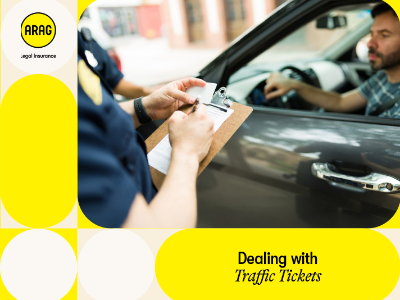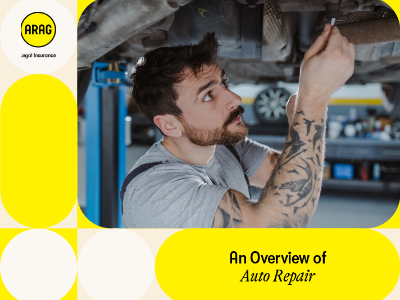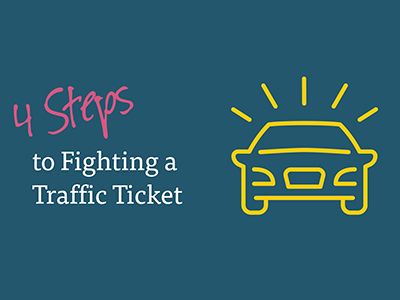For months your teen has worked at a part-time job to help pay for a used car. After scouring ads on Craigslist, the day comes when a listing pops up for “the one” that meets both your standards. And good news — the seller lives only 45 miles away!
Maybe you’ve bought an old computer desk on Craigslist with successful results, but a used car? That sounds fraught with tricky questions and negotiations. Don’t worry. Here are seven steps to help guide you toward a safe and successful private transaction.
1. First, look for signs of a scam.
While Craigslist remains the “most profitable classified site in the world” according to the AIM Group, some sellers still employ classic scamming techniques to lure you into an illicit transaction. Here are some common (and many times very subtle) signs of fraud to watch for:
-
A price that's bizarre (e.g., $1,523) or too good to be true.
-
A personal email address pasted into the main photo.
-
A seller who wants you to wire funds or pay toward loans or liens.
-
Transactions that involve a third party or shipping the auto.
Craigslist offers these additional tips and resources to help you spot and avoid scams.
2. Research the vehicle for sale.
Once you know the buyer means business, it’s time to turn your attention toward the car. To get a solid estimate of the car’s value, the National Automobile Dealers Association (NADA) and Kelly Blue Book are reputable resources.
Next, go online to different sites and forums such as Consumer Reports or Edmunds where you can view reports, discussions and updates regarding the maintenance and performance of the vehicle make and model. For example, if you find out that the car is known to have a drivetrain malfunction and is quite expensive to fix, you may want to steer clear of the purchase.
3. Scrutinize the online photos of the car.
As you review the photos (and hopefully there are a lot of them!), look closely for any noticeable dings, dents or damage. Note that some sellers will only send one or two pictures of the car or photograph it at certain angles so you might not necessarily see that long, rusty scratch running down the right-front quarter panel.
4. Learn about different vehicle titles.
Be sure to the check the “Title Status” field in the Craigslist ad. The title is considered “evidence of ownership” and the types of title may vary from state to state. Generally, the car is thought to have a “clean” title if it’s never been in a serious accident, never had the odometer rolled back and was never bought back by the manufacturer because of a defect.
If a car has been in an accident and is declared totaled (a total loss due to accident damage) by an insurance company, the clean title is replaced with a “salvage” one. The salvage title lets potential buyers know that there has been an accident and that the car may not be safe to drive.
Once a vehicle is fixed after earning a salvage title, it's given a “rebuilt” title. In most cases, a rebuilt title is only provided after the car has been fixed and inspected by the state or jurisdiction that issues titles. Keep in mind that buying a car without a clean title means you may be opening the door to unwanted maintenance issues, financial setbacks and legal disputes.
Types of Car Titles
While the description of automobile titles differs from state to state, here are descriptions of various types of titles:
Bonded title – Used to obtain a vehicle title when there is serious deficiency in the ownership documentation.
Clear title – Issued to an owner when no lien or levy from creditors or other parties is specified.
Electronic title – Many state DMV title systems are issuing electronic or paperless titles. An actual title document can often be obtained for transfer or loan processing.
Junk title – A title which has been sold to a junkyard may incur a “junk title” designation.
Lienholder title – The purchaser is listed as the owner on the title, but it will list the lender as lien holder, and the lender retains possession of the title.
Rebuilt title – Issued by an insurance company, body shop, collision center or licensed rebuilder when a vehicle which has been substantially rebuilt.
Salvage title – Issued when a vehicle incurs some type of loss event such as major damage, theft or repair.
5. Make sure the meeting place is safe.
Before you make the trip, try to set things up so you’ll be comfortable with the location and interaction:
- Instead of just texting the seller, try to talk to the person over the phone. For example, if you talk to a woman over the phone and then arrive at the location and three guys she failed to mention show up, you’ll know it’s not a safe situation.
-
Try to meet in a more public place, like a store parking lot during business hours where there will be surveillance cameras. In some cities, police stations have been designated as safe meeting spots.
-
Make sure you let someone know the address of where you’re headed and how long you plan to be gone, especially if the seller is located a good distance away. It also doesn’t hurt to bring a friend yourself, especially if he or she is versed in automotive repair or purchases.
6. Look the car over. Then do it again.
Once you arrive, look the car over carefully and compare it to the photos in the ad. Write down any damage, discoloration or differences you see, from a rock chip in the windshield to a tiny tear in the seat. File these items away until it’s time to negotiate.
Then take the car for a fairly lengthy test drive on city streets as well as highways, all the time listening for any pings, knocks or clunks in the engine or elsewhere. Also, test the brakes, turn on the lights, get a feel for the steering, etc.
Ideally, it would be best to take the car to a mechanic for an inspection, but in many cases this may be your only chance to inspect the car. So take your time and ask the seller specific questions about ongoing maintenance, repairs done on the car or why he or she is selling it.
7. Negotiate like a pro.
Once you’ve taken your time to inspect the car and you like what you see, it’s time to make an offer. Here are some key points to keep in mind as you negotiate:
- How much does the seller’s price match up with the estimates you gathered? If it is high, counter with a lower purchase price and try to meet in the middle.
- Remember that list of imperfections you noticed about the car? Now is the time to bring those items to the seller’s attention and note how much it would cost to fix them — which should give you more bargaining power.
- Be patient with your search. if you aren’t comfortable with the price, the condition of the car, the seller’s approach or the overall circumstances, you can always walk away. Sure, you may have driven a long way and it’s not nearly as fun to drive home empty-handed, but it’s your money, and there are always more cars out there.



